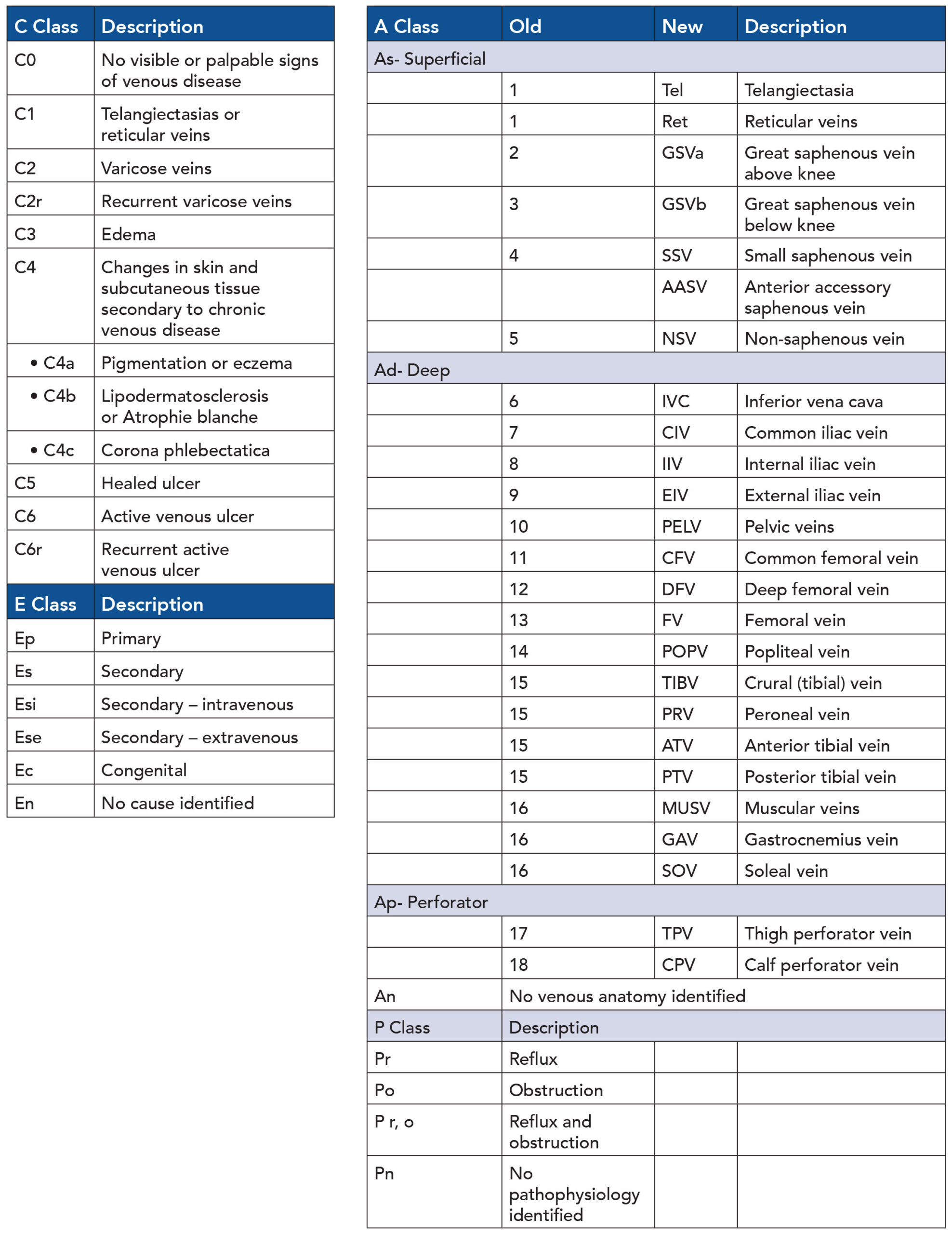Purpose:
Introduced in 1995 and revised in 2004 and 2020, The Clinical, Etiological, Anatomical, and Pathophysiological (CEAP) classification provides a comprehensive framework for assessing and categorizing chronic venous disorders. It categorizes venous disease based on clinical signs, etiology, anatomical distribution, and underlying pathophysiology, offering a standardized approach for clinicians to classify, document, and communicate various aspects of venous disease effectively. By systematically categorizing venous disorders, it facilitates patient-centered care.
Instructions for Use:
- Clinical: Evaluate the patient’s clinical symptoms and physical examination findings to determine the appropriate clinical category (C).
- Etiological: Identify any underlying etiological factors contributing to venous disease and assign the corresponding etiological category (E).
- Anatomical: Determine the anatomical extent and distribution of venous abnormalities to assign the anatomical category (A).
- Pathophysiological: Consider the underlying pathophysiological mechanisms involved in venous disease progression and assign the pathophysiological category (P).
- Document the CEAP classification according to the assigned categories (e.g., C2E2A3P4).

Reference:
- Eklöf, B., Rutherford, R. B., Bergan, J. J., Carpentier, P. H., Gloviczki, P., Kistner, R. L., et al. (2004). Revision of the CEAP classification for chronic venous disorders: consensus statement. Journal of Vascular Surgery, 40, 1248-1252.
- Lurie, F., Passman, M., Meisner, M., Dalsing, M., Masuda, E., Welch, H., et al. (2020). The 2020 update of the CEAP classification system and reporting standards. Journal of Vascular Surgery: Venous and Lymphatic Disorders, 8, 342-352.
- Hong, K. P. (2022). The 2020 Update of the CEAP Classification: Updated Contents and Background. Annals of Phlebology, 20(1), 19-23.




